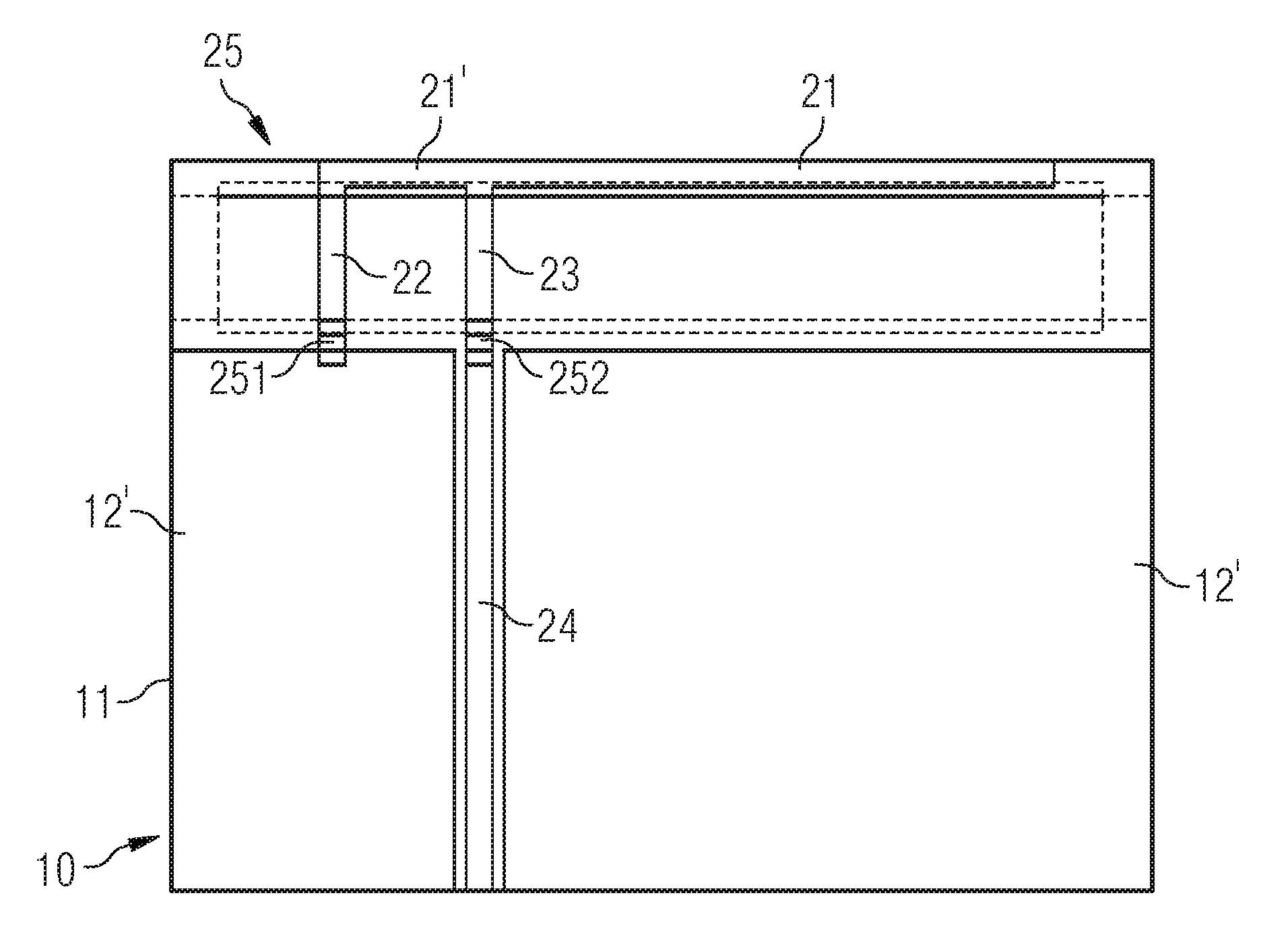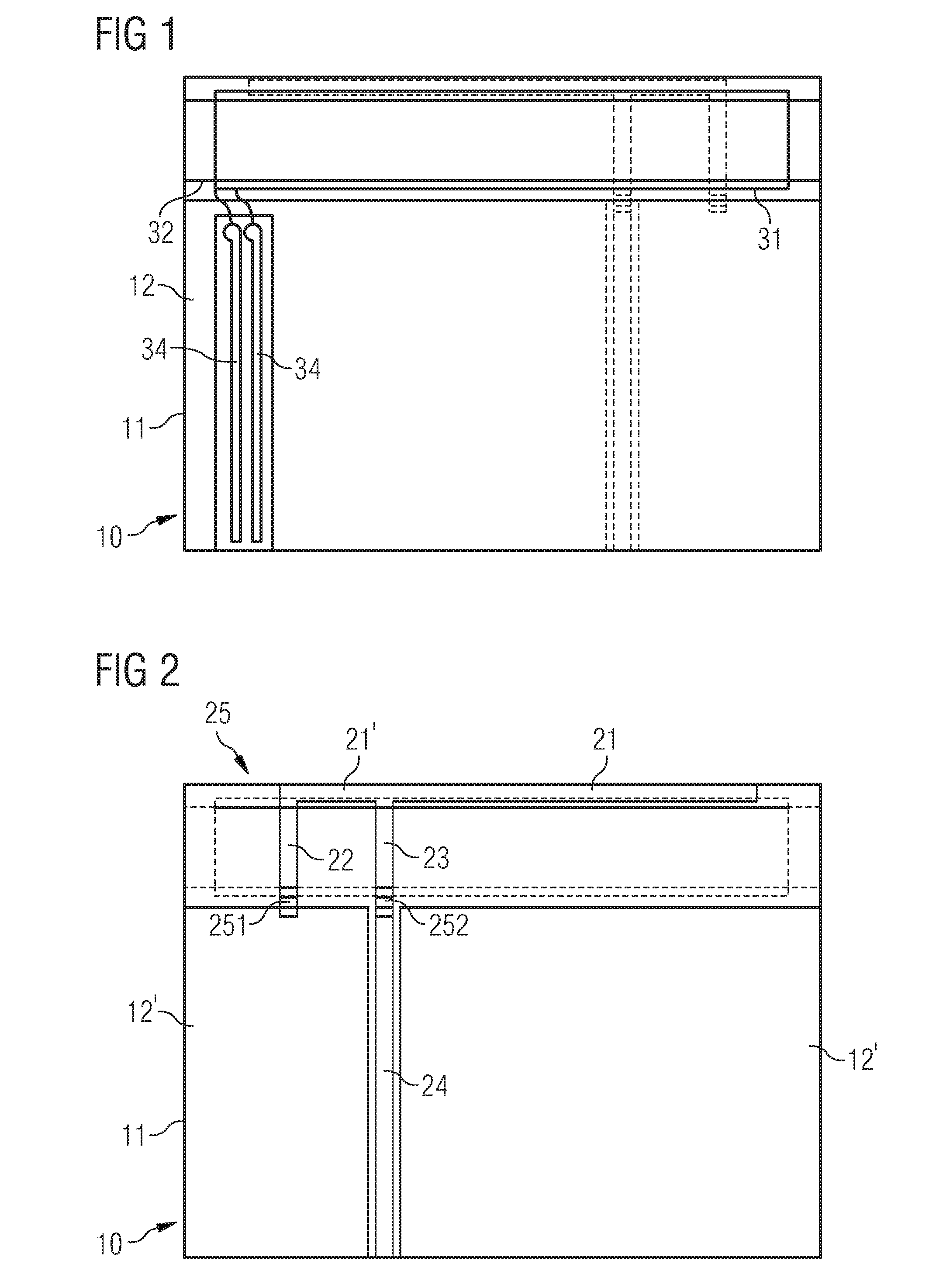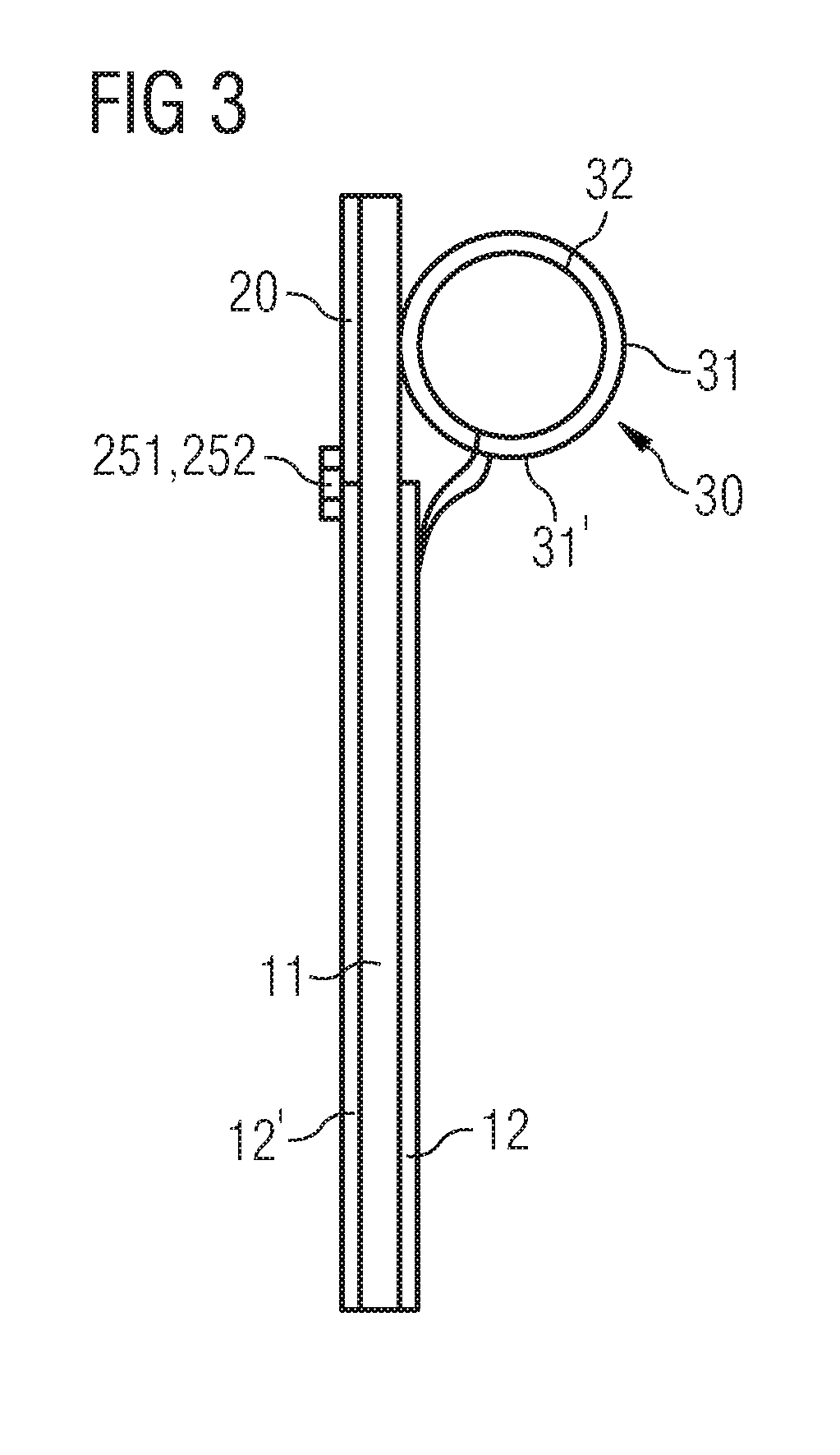Antenna arrangement for hearing device applications
a technology for hearing devices and antennas, applied in the direction of antennas, antenna supports/mountings, radiating elements, etc., can solve the problems of unsatisfactory solutions, difficult integration of antennas into hearing devices, and inability to integrate them into hearing devices, etc., to achieve effective isolation, effective isolation, and especially effective isolation of electric antennas
- Summary
- Abstract
- Description
- Claims
- Application Information
AI Technical Summary
Benefits of technology
Problems solved by technology
Method used
Image
Examples
Embodiment Construction
[0018]If electrical devices are to intercommunicate via a wireless transmission path, all the communicating peers have to be provided with a special interface. Apart from a transmission and reception circuit, each device must have an appropriate antenna designed for the particular transmission procedure.
[0019]An antenna is a special component that converts electrical energy into electromagnetic waves and vice versa. The way in which an antenna works and its characteristics (effective direction) are determined substantially by its design. This in turn depends primarily on the transmission procedure used and also on the frequencies used. In very simplified terms, an antenna consists of an electric conductor piece through which flows a high-frequency electric current. In the case of a transmitting antenna, the electric current is generated by a generator and fed to the antenna. The charge carriers moving in the conductor generate an electromagnetic field which changes direction at the ...
PUM
 Login to View More
Login to View More Abstract
Description
Claims
Application Information
 Login to View More
Login to View More - R&D
- Intellectual Property
- Life Sciences
- Materials
- Tech Scout
- Unparalleled Data Quality
- Higher Quality Content
- 60% Fewer Hallucinations
Browse by: Latest US Patents, China's latest patents, Technical Efficacy Thesaurus, Application Domain, Technology Topic, Popular Technical Reports.
© 2025 PatSnap. All rights reserved.Legal|Privacy policy|Modern Slavery Act Transparency Statement|Sitemap|About US| Contact US: help@patsnap.com



